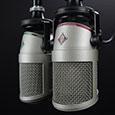There are many tools in the gym but do you know the history of them? Here is an article about the tools we use in the gym.

The heavy bag, which is good for strength and quick training, dates back to the ancient Olympic Games. The first gold medal in boxing was awarded to a fighter named Onomastos in the twenty-third Olympiad. The earliest boxers were trained as if soldiers for war. Participants boxed barehanded. One of the earliest boxers, Eurydamus, was known for his fierceness; he was reported to have swallowed his own teeth during a match rather than admit that he had been severely injured. By the beginning of the first century A.D., boxing had been forbidden and would not be seen again in the sports world until the eighteenth century in Great Britain. The first recorded English boxing champion was James Figg, who fought in the early part of the 1700s. Figg was followed by Jack Broughton in the mid-century. Broughton was considered a master of blocking, parrying, and hitting on the retreat. In 1743, Broughton created a boxing code of conduct called the London Prize Ring Rules. The United States Office of Patents and Trademarks awarded a patent for the punching bag to Simon D. Kehoe in 1872. Since that time, others have made improvements to better simulate the human body. In 1917, the young Jack Dempsey called on Everlast for specialized boxing equipment, resulting in the development of the brand’s first boxing headgear, which would last for more than 15 rounds of intensive training. Everlast evolved into the preeminent brand in the world of boxing and among the most recognized brands in the overall sporting goods and apparel industries. Based in the Bronx, the Everlast brand is represented in more than 75 countries and holds 88 licensees worldwide. A punching bag is a round or cylindrical piece of athletic equipment used by professional boxers for training and by amateurs for exercise. The bags come in a variety of sizes for a range of uses. The largest, known as the heavy bag, is used to develop footwork and power. The timing bag, usually suspended from the ceiling and floor by bungee cords, develops timing and hand-eye coordination. The small speed bag develops hand speed, coordination, and rhythm.
In the late mid 20th century, heavy bags made a comeback. People began using heavy bags and taking classes. The heavy bag was called a striking bag. Joe Frazier and Muhammad Ali were famous boxers in the 1970s and 1980s. Joe did his first training in meatpacking plants, making use of meat slabs as heavy bags. Tae Bo, a fitness program from Billy Blanks and his daughter based partially on heavy bags, has been popular from the ’80s to today.
The earliest striking bags were made from kangaroo skin. However, goatskin is now more commonly used for small punching bags. The animal skin is dipped in strong chemicals to remove the hair, prior to being cured in salt water. After curing, the skin is stretched, dried, and ready for use in manufacturing. The larger, heavy bags are constructed of polyvinyl or canvas. Canvas is a heavy cotton material. Polyvinyl is a plastic material developed during the Second World War. It is made from the byproducts of petroleum and coal. Heavy bags are a great combo of strength, cardio, and agility training. No matter your preferred sport, they are a great tool to use in your arsenal of training.
Kettlebell History
A kettlebell is a type of dumbbell or free weight that is round with a flat base and an arched handle. It looks like a cannonball with a handle or a teapot without the spout, hence the name “kettlebell” in English. In Russia, it is called a “girya.” Kettlebells are made of either cast iron or steel. A kettlebell’s center of mass extends beyond the hand. Kettlebells can be swung, thrown, juggled, pressed, held, moved, and manipulated in hundreds of ways. They are small and portable and can be incorporated into all aspects of athletic and fitness training. Kettlebells are a highly efficient way to lose weight, tone your body, increase your cardiovascular fitness and strength, and maintain joint health, mobility, and flexibility.
The history of the kettlebell is somewhat unclear; however, it appears that the Russian kettlebell as we know it today originated approximately 350 years ago. The first appearance of the word in a Russian dictionary appeared in 1704. They were originally used as handled counterweights (bearing the Imperial Seal) to weigh out dry goods on market scales. Kettlebells were originally used as counterweights in markets. People started throwing them around for entertainment and they were later put to use for weightlifting.
Many cultures throughout history have used some form of weight with an attached handle for strength training. Scottish tribes hurled weighted objects with handles in Highland Games. Chinese Shaolin monks used stone padlocks in similar ways to kettlebells. This type of training was called Shi-SuoGuong (The Art of Stone Padlock) and predates kettlebells by thousands of years. There is speculation that kettlebell-like weights were used by the Romans and Greeks.
Kettlebells were used extensively by old-time strongmen such as Arthur Saxon, Sig Klein, Clevio Massimo, and The Mighty Apollo. They were once a common staple in American gyms and training academies and were often called “ring weights,” although ring weights could be any square weight with a ring attached to the top so it could be held and lifted. “Block weights” were the American equivalent of the original Russian scale weights; they looked similar to today’s “power blocks.”
In 1948, modern kettlebell lifting became the Soviet Union’s national sport. In the 1970s, kettlebell lifting became part of the United All-State Sports Association of the USSR. And in 1985, national rules, regulations, and weight categories were finalized. The United States Secret Service and the FBI Counter Assault Team also require their operators to train high-repetition, ballistic kettlebell moves.
Today, exercising with kettlebells is undergoing a major resurgence and kettlebell training has now become one of the most popular and best ways to lose weight, maintain a high level of cardiovascular fitness, get stronger, and get that sculpted, toned, healthy, and beautiful body you’ve always wanted. Proper kettlebell training can help you to live a longer, healthier life. Joint health, mobility, and flexibility can all be maintained, and even improved, with the correct application of kettlebell movements.
Medicine Ball History
Medicine balls are heavy-weighted balls, coming in a variety of sizes and weights (with the biggest we could find ringing in at a whopping 150 pounds) with a diverse range of fitness applications. For starters, medicine balls are noted to be one of the most diverse pieces of exercise equipment one can own, useful for toning almost every part of the body, and are also extensively used in various forms of physical therapy.
While details are sparse on the history of medicine balls, we can reliably track their usage back around 3,000 years, where they were used by Persian wrestlers looking to become stronger. In ancient Greece, Hippocrates considered them to be an essential tool for helping injured people regain mobility. He advised people to use them as a general, all-purpose way of remaining healthy.
This all brings us back to the origin of the name. The word “medicine” was long synonymous with the word “health.” For example, it’s noted that Renaissance physician Hieronymus Mercurialis advised that people of all fitness levels should use what we would recognize as medicine balls in his book De Arte Gymnastica, as part of what he called “medicinal gymnastics.” The use of the word “medicinal” in this case was to highlight how the exercises could be used as both a way of healing injuries and preventing them in the first place, through general fitness. Although devices we would recognize as being medicine balls have been commonplace for millennia, the word itself is only a few hundred years old, being attributed to one Professor Roberts way back in 1889. According to a Scientific American article from the time, Roberts coined the term “medicine ball” in reference to the fact that using the ball “invigorates the body, promotes digestion, and restores and preserves one’s health.” As “health” and “medicine” were considered to be synonymous terms at the time, calling it a “medicine ball” was natural enough. Today, we still refer to medicine balls as such, even though the terms “health” and “medicine” aren’t as synonymous as they once were. “Health ball” also doesn’t quite have the same ring to it. In the ancient world, medicine balls often took the form of animal bladders filled with sand.
President Herbert Hoover was supposedly a big fan of exercising with a medicine ball and would reportedly spend a great deal of time throwing one over a net to a willing catcher who would then throw it back. This game is sometimes known as “Hoover-ball” in his honor. There is a freedom of movement with many vigorous medicine ball exercises that almost exactly duplicate the movements that are found in many sports that aren’t always found in other strength training movements. Medicine balls are an outstanding way to train acceleration for increased force production.
Dumbbell History
The dumbbell originated in the most basic form in ancient Greece. These weights were called halteres. They were used as lifting weights but also in their long jump. They were usually large, made of stone, and had a hole in them, rather than a bar by which the weights were held by. They are primarily used for toning, weight training, and muscle training. Depending on the way dumbbells are used, they can tone or build almost any part of the body through their weight distribution and the way that they are held. There are many types of dumbbells currently available on the market. The main ones are the adjustable dumbbell, the fixed-weight dumbbell, and the sectorized dumbbell. Adjustable dumbbells generally have cross-hatched handles for better grip, and the weight can often be altered by sliding weights on and off the ends of the dumbbell to suit personal preference. Dumbbells became popular in 1864 when John Blundell’s book The Muscles and Their Story was published. These massively publicized dumbbells and they became commonplace. There are many different exercises that can be utilized with the dumbbell, as they are a very versatile piece of equipment. They can now be used to train almost every part of the body if used in the correct way.
References:
Heavy Bag
http://www.jameslafond.com/article.php?id=376&pr=0
Kettle Bell History
https://www.kettlebellsusa.com/what-is-a-kettlebell/
Medicine Ball
https://en.wikipedia.org/wiki/Medicine_ball
History of the Dumbbells
http://www.gainbuildmuscle.com/the-history-of-dumbbells/
For more ideas on using these tools, check out my Pinterest page at:
https://www.pinterest.com/cchapan/
Was this Article Helpful?
If this article was helpful to you, please consider linking this article to your own blog or sharing this through the social buttons below. You will also find other great articles at “Workouts“.
- 4shares
- 3Facebook
- 0Twitter
- 1Pinterest
- 0LinkedIn
Christina Chapan
Latest posts by Christina Chapan
- Body Language for Personal Trainers,Teachers and Group Instructors - January 12, 2020
- Allergies + Exercise: An Overview - January 9, 2020
- The Safety of Running Solo - January 5, 2020















